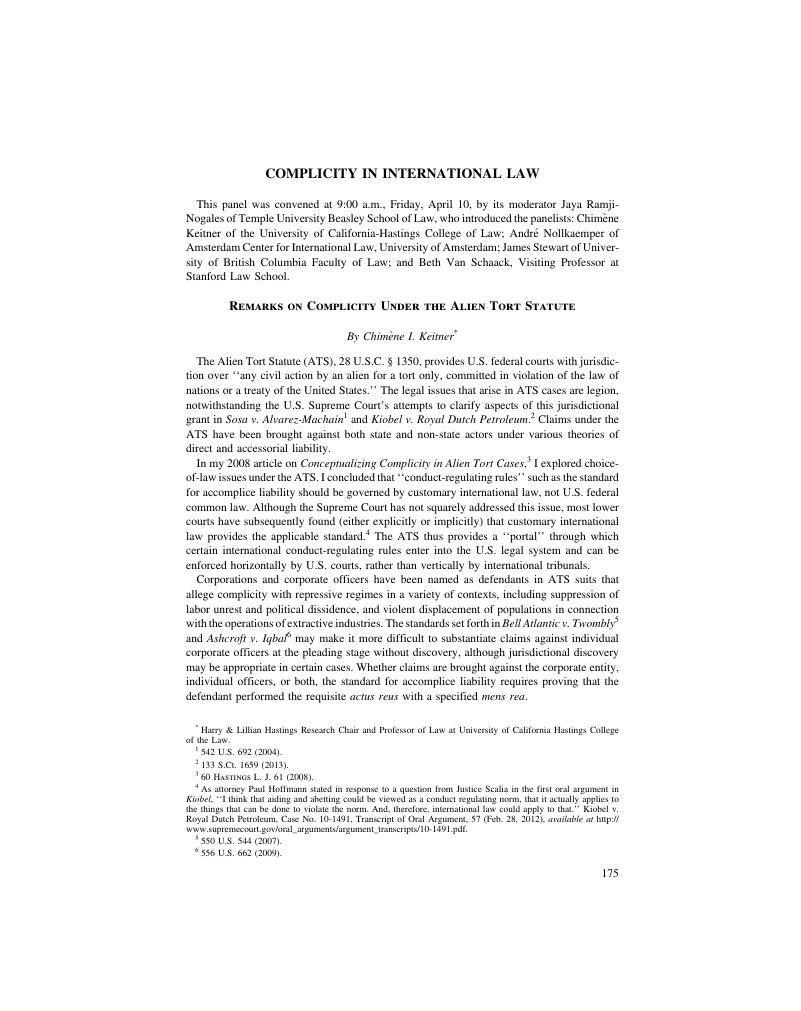No CrossRef data available.
Article contents
Remarks on Complicity under the Alien Tort Statute
Published online by Cambridge University Press: 20 January 2017
Abstract

- Type
- Complicity in International Law
- Information
- Copyright
- Copyright © American Society of International Law 2016
References
1 542 U.S. 692 (2004).
2 133 S.Ct. 1659 (2013).
3 60 Hastings L. J. 61 (2008).
4 As attorney Paul Hoffmann stated in response to a question from Justice Scalia in the first oral argument in Kiobel, “I think that aiding and abetting could be viewed as a conduct regulating norm, that it actually applies to the things that can be done to violate the norm. And, therefore, international law could apply to that.” Kiobel v. Royal Dutch Petroleum, Case No. 10-1491, Transcript of Oral Argument, 57 (Feb. 28, 2012), available at http://www.supremecourt.gov/oral_arguments/argument_transcripts/10-1491.pdf.
5 550 U.S. 544 (2007).
6 556 U.S. 662 (2009).
7 Case No. IT-98-30/I-A, Appeals Chamber Judgment, ¶ 92 (Int’l Crim. Trib. for the Former Yugoslavia Feb. 28, 2005).
8 See Keitner, Conceptualizing Complicity, supra note 3, at 86 n.122, citing Cent. Bank of Denver, N.A. v. First Interstate Bank, N.A., 511 U.S. 164, 181 (1994).
9 Id. at 90-96.
10 See id. at 67 n.26.
11 See Mohamad v. Palestinian Authority, 132 S. Ct. 1702 (2012) (noting that “the TVPA contemplates liability against officers who do not personally execute the torture or extrajudicial killing”).


